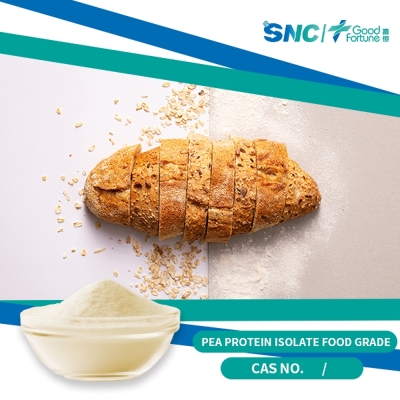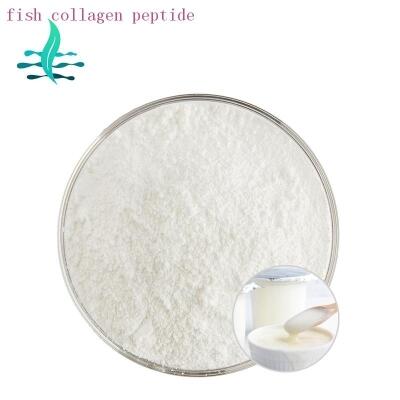The worse the environment, the more methionine you need
-
Last Update: 2020-06-28
-
Source: Internet
-
Author: User
Search more information of high quality chemicals, good prices and reliable suppliers, visit
www.echemi.com
methionine is not only an amino acid necessary for growth but also a necessary for maintaining immune functionWe know very little about its latter rolegwZ
A concept called the "ideal protein model" is applied to feed formulations, which is generally considered the best fit for animal productionThis model depends on the animal's maintenance needs, production needs, lactation needs, etc., but also by the animal's day age, feed intake, feed composition and animal health and other factorsgwZ
The ideal amino acid model is also used to determine the restrictive amino acids in the formulationWhat is a restricted amino acid? Is the protein synthesis decreased when a necessary amino acid is lacking, and when supplemented it increasesgwZ
It is well known that methionine is the second most restrictive amino acid in pigsIts role in protein synthesis is indisputable, and it is equally important for intestinal health and immune functiongwZ
Methionine and intestinal healthgwZwe know that only animals that are immune and in good health can achieve maximum production levelsBut to be honest, commercial pig farms are hard to reachCommercial pig farms are actually in a sub-healthy state because of stress or illnessIn this state, animals actually need amino acids to maintain immune function, not to growCan its ideal amino acid model be determined according to growth needs?gwZ
When the immune system is stimulated, the lymphatic system produces immunoglobulins, which reach the lesions to destroy the pathogenBecause of the high level of methionine in immunoglobulin, the amount of methionine supplied by the daily grain directly affects the synthesis of immunoglobulingwZ
In addition, methionine is also very important for the synthesis of viscoproteinsSimilar to immunoglobulins, viscoproteins are a glycoprotein that is secreted by the walls of the intestines, which is rich in methionineIts main role is to protect the intestinal wall from damage, so the lack of methionine will affect the synthesis of viscoproteins, affect intestinal health, and thus affect growth and feed conversion ratesgwZ
In the past, the importance of methionine in commercial pigs was neglected for the following reasons: gwZ 1 Nutritionists lack knowledge of this, or the formulation and production process is interfered with by others, and the role of methionine is limited to growth needs gwZ
2 Mistakenly believed that the corn bean meal-type diet methionine is not lacking gwZ
3 When the price of amino acids is expensive, the level of methionine is reduced by cost pressure gwZ
The ratio of methionine and lysine in the feed of gwZ piglets, medium pigs and large pigs should be 63, 65 and 67, respectively In fact, many literatures report that this optimal proportion should increase with age and weight gain We should not lose sight of an extremely important factor that affects the need for methionine, namely, the cleanliness of the environment, whether growth-promoting agents are added to the feed, and the breeds of pigs Long fast and immune pressure is high, methionine levels should be correspondingly high gwZ
With these concepts in mind, the remaining question is how close the level of methionine is to what is actually needed when we prepare the pig, and how long it takes us to consider whether a single grain methionine supply can satisfy the growth of the animal son it after its metabolic loss gwZ methine is not only an amino acid necessary for growth but also a necessary for maintaining immune function We know very little about its latter role gwZ
A concept called the "ideal protein model" is applied to feed formulations, which is generally considered the best fit for animal production This model depends on the animal's maintenance needs, production needs, lactation needs, etc., but also by the animal's day age, feed intake, feed composition and animal health and other factors gwZ
The ideal amino acid model is also used to determine the restrictive amino acids in the formulation What is a restricted amino acid? Is the protein synthesis decreased when a necessary amino acid is lacking, and when supplemented it increases gwZ
It is well known that methionine is the second most restrictive amino acid in pigs Its role in protein synthesis is indisputable, and it is equally important for intestinal health and immune function gwZ
Methionine and intestinal health gwZ we know that only animals that are immune and in good health can achieve maximum production levels But to be honest, commercial pig farms are hard to reach Commercial pig farms are actually in a sub-healthy state because of stress or illness In this state, animals actually need amino acids to maintain immune function, not to grow Can its ideal amino acid model be determined according to growth needs? gwZ
When the immune system is stimulated, the lymphatic system produces immunoglobulins, which reach the lesions to destroy the pathogen Because of the high level of methionine in immunoglobulin, the amount of methionine supplied by the daily grain directly affects the synthesis of immunoglobulin gwZ
In addition, methionine is also very important for the synthesis of viscoproteins Similar to immunoglobulins, viscoproteins are a glycoprotein that is secreted by the walls of the intestines, which is rich in methionine Its main role is to protect the intestinal wall from damage, so the lack of methionine will affect the synthesis of viscoproteins, affect intestinal health, and thus affect growth and feed conversion rates gwZ
In the past, the importance of methionine in commercial pigs was neglected for the following reasons: gwZ 1 Nutritionists lack knowledge of this, or the formulation and production process is interfered with by others, and the role of methionine is limited to growth needs gwZ
2 Mistakenly believed that the corn bean meal-type diet methionine is not lacking gwZ
3 When the price of amino acids is expensive, the level of methionine is reduced by cost pressure gwZ
The ratio of methionine and lysine in the feed of gwZ piglets, medium pigs and large pigs should be 63, 65 and 67, respectively In fact, many literatures report that this optimal proportion should increase with age and weight gain We should not lose sight of an extremely important factor that affects the need for methionine, namely, the cleanliness of the environment, whether growth-promoting agents are added to the feed, and the breeds of pigs Long fast and immune pressure is high, methionine levels should be correspondingly high gwZ
With these concepts in mind, the remaining question is how close the level of methionine is to what is actually needed when we prepare the pig, and how long it takes us to consider whether a single grain methionine supply can satisfy the growth of the animal son it after its metabolic loss gwZ
This article is an English version of an article which is originally in the Chinese language on echemi.com and is provided for information purposes only.
This website makes no representation or warranty of any kind, either expressed or implied, as to the accuracy, completeness ownership or reliability of
the article or any translations thereof. If you have any concerns or complaints relating to the article, please send an email, providing a detailed
description of the concern or complaint, to
service@echemi.com. A staff member will contact you within 5 working days. Once verified, infringing content
will be removed immediately.







